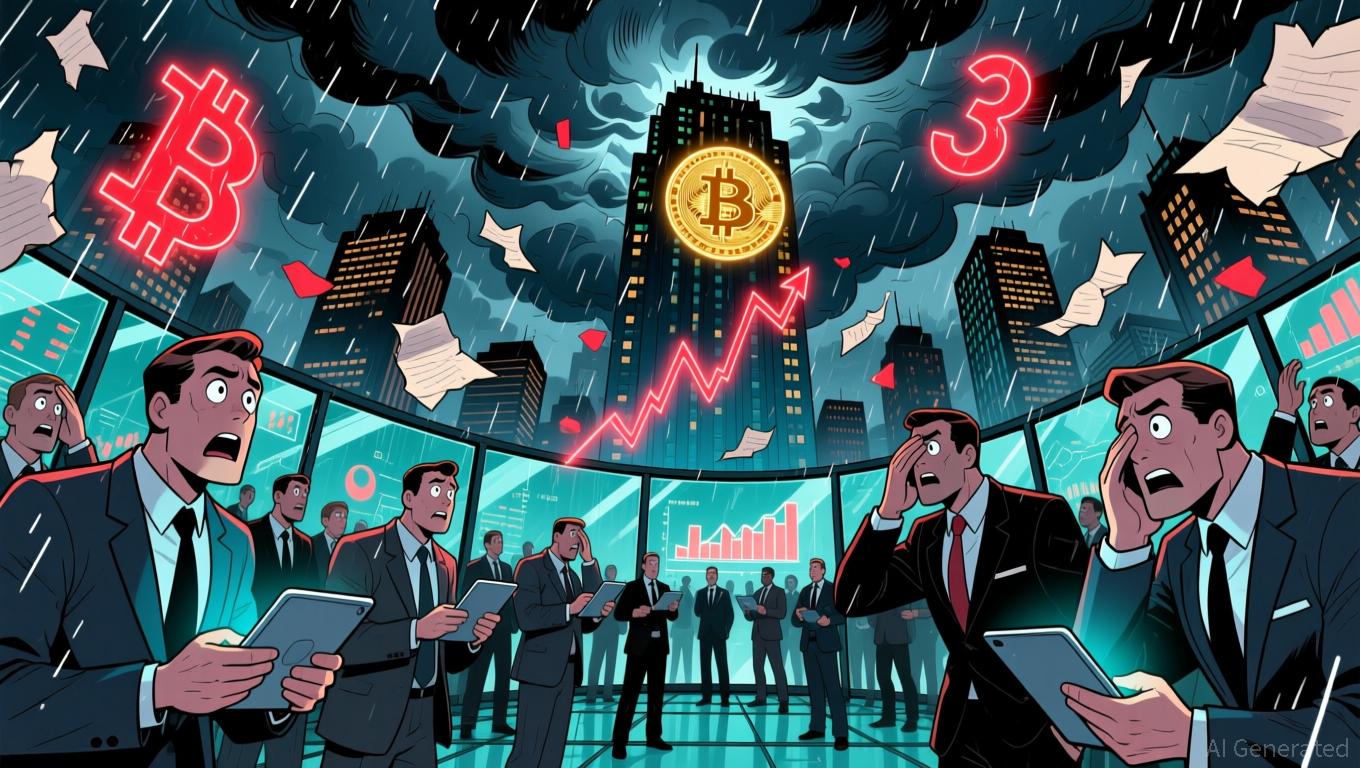Bitcoin News Update: Tether Connects Conventional Finance and Blockchain Through Expansion in Latin America
- Tether invests in Parfin to boost USDT adoption in Latin America via custody, trading, and blockchain settlement tools. - The partnership targets cross-border payments, RWA tokenization, and institutional credit markets, aligning with Tether's finance-bridge mission. - Latin America's $1.5T crypto volume in 2025 positions the region as critical for scaling institutional blockchain solutions. - Tether's strategy counters regulatory shifts like Brazil's proposed stablecoin transaction tax, positioning USDT
Tether, the company behind the world's most widely used stablecoin, has strengthened its presence in Latin America by investing in Parfin, a local crypto infrastructure provider, to boost institutional uptake of its
This investment is part of Tether’s ongoing efforts to establish USDT as more than just a liquidity instrument for crypto trading platforms.

This development follows Tether’s previous investments in Bitcoin-collateralized lending platforms such as Ledn, where
Tether’s expansion in Latin America coincides with increasing regulatory attention in the area. For example, Brazil is considering applying its financial transaction tax (IOF) to stablecoin-based international payments,
Tether’s approach also reflects wider trends in the crypto-backed lending sector,
Disclaimer: The content of this article solely reflects the author's opinion and does not represent the platform in any capacity. This article is not intended to serve as a reference for making investment decisions.
You may also like
Bitcoin Updates: Ark Invest Increases Crypto Portfolio by $39.6M During Market Downturn, Shows Confidence in Future Growth
- U.S. crypto stocks fell 1.45%-4.48% pre-market on Nov 21, mirroring Bitcoin's $91,600 drop and $3.79B ETF outflows. - Ark Invest defied the selloff by adding $39.6M to Bullish, Circle , and Bitmine shares, betting on long-term crypto value. - MicroStrategy's $1.5B Bitcoin accumulation contrasts with its 60% stock decline amid dilution concerns and leveraged liquidations. - Bitmine defends crypto's 12-36 month recovery timeline, citing Ethereum upgrades and asset tokenization potential. - AI/HPC miners su

Citi and Swift Bridge: Traditional Fiat Settlements That Can Be Reversed and Blockchain Settlements That Are Final
- Citi and Swift demonstrated a synchronized settlement mechanism linking fiat currencies and digital assets via a Payment-versus-Payment (PvP) workflow. - The trial used blockchain tools like smart contracts and escrow to align real-time settlements, addressing interoperability demands as stablecoin markets grow toward $1.9 trillion by 2030. - Test USDC tokens on Ethereum’s Sepolia network were coordinated with Swift transfers, mitigating blockchain irreversibility risks and eliminating intermediaries in

Hyperliquid's Latest Rise in Trading Activity: An In-Depth Look at On-Chain Liquidity and the Progression of DeFi
- Hyperliquid dominates decentralized derivatives with $317.6B Q3 2025 volume, 73% DEX market share, and $653B quarterly turnover. - HIP-3 growth mode slashed taker fees by 90%, while HyperEVM/HyperCore blockchain enables zero-gas, sub-second trades and cross-chain interoperability. - Platform faces volatility risks: 3 major 2025 attacks including $4.9M POPCAT bad debt incident, exposing thin-liquidity vulnerabilities. - HYPE token surged 640% post-2024 launch with $9.3B market cap, but faces competition f
PENGU Token's Latest Rally and Technical Perspective: Short- and Medium-Term Prospects in Rising Memecoins Demonstrating Robust On-Chain Activity
- PENGU token surged 12.8% on Nov 18, 2025, amid Bitcoin's 4.3% rise and $35.3B altcoin market rebound. - Technical indicators show mixed short-term potential, with OBV rising but broader trends bearish. - PENGU's NFT ecosystem ties differentiate it from utility-lacking memecoins like Maxi Doge . - Whale accumulation and Solana integration boost liquidity, but low RSI and short interest signal caution. - Volatility risks persist due to speculative nature, regulatory scrutiny, and NFT market saturation.